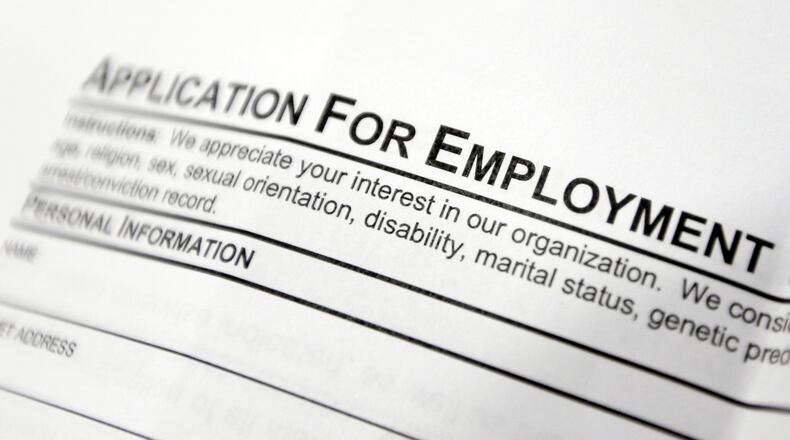In the Buckeye state, initial claims have risen from 11,450 in the week of Feb. 4 to 15,750 in the week of March 25, according to the latest data from the Ohio Department of Job and Family Services (ODJFS), released Thursday.
The number of initial or new claims was 938 more than the previous week, the department said.
PNC senior economic advisor Stuart Hoffman thinks federal data may be pointing to a possible slackening in hiring trends in coming months.
“This is not to say that economic conditions are set to collapse entirely,” Hoffman said in an email, referring to national numbers. “Rather, any newly laid-off workers are not as likely to be so quickly rehired as businesses assess their plans to weather what we expect will be a mild recession in the second half of this year.”
Ohioans filed 56,926 continued traditional unemployment claims last week, which was 178 fewer than the previous week.
In Ohio, the unemployment rate in February was 3.9%, just above the national rate of 3.6%. The total number of traditional claims filed from March 19 to March 25, was 72,676, the state said.
Rea Hederman, vice president of policy at the market-focused Buckeye Institute in Columbus, said the rise in new claims in the past few weeks launched from a “very low” starting point in late January.
“Some of the increase is returning to trend,” Hederman said. “Ohio is also following the nation with a slight uptick in jobless claims, but Ohio’s unemployment claims grew faster in the last month than the national average.”
“There are some clouds on the horizon,” he added. “National employment numbers have not been as strong either, so the labor market’s recovery has cooled somewhat.”
Credit: Marshall Gorby
Credit: Marshall Gorby
Ohio’s labor force participation rate in February was put at 61.4%. The national labor force participation rate in February was 62.5%. The participation rate is the percentage of the population age 16 or older that is either working or actively looking for work, according to the U.S. Bureau of Labor Statistics.
Nationally, labor force participation was fairly steady between 62.5% and 63.5% for most of a decade leading up to 2020, then dipped during COVID, according to BLS. It was back above 62% for all of 2022, and sat at 62.5% in the most recent month, February 2023. The labor force participation rate was higher, around 66-67%, from about 1990 until 2008.
In an interview Thursday, Hoffman said there have not been that many new layoff announcements in Ohio. “I suspect it’s more of a blip,” he said. State jobs numbers have been “quite strong,” of late. And he noted that continuing claims have been down since early February.
“That’s not a big increase,” he said of the upward trend in new claims. “That’s a low level.”
If initial claims top 20,000 or 25,000, that could be seen as a “red flag,” he added.
The March 10 collapse of Silicon Valley Bank in California, shortly followed by the failure of New York-based Signature Bank, the second- and third-largest bank failures in U.S. history, have created new economic uncertainty in recent weeks.
Individuals can visit OhioMeansJobs.com or contact their local OhioMeansJobs center to find and apply for job openings, work on resumes, practice interviewing and more.
About 3,283 of those who filed for new state jobless benefits have been flagged for more stringent identity verification, to ensure they are not fraudulent, the state said.
Credit: Bill Lackey
Credit: Bill Lackey
About the Author



